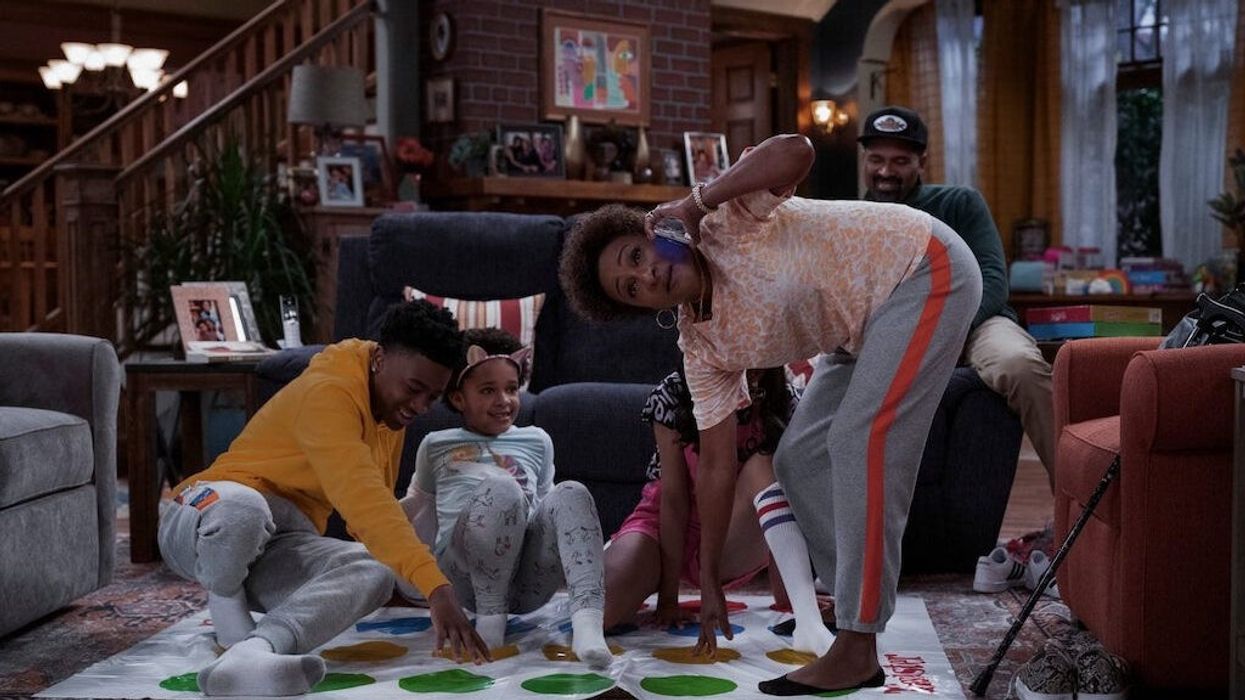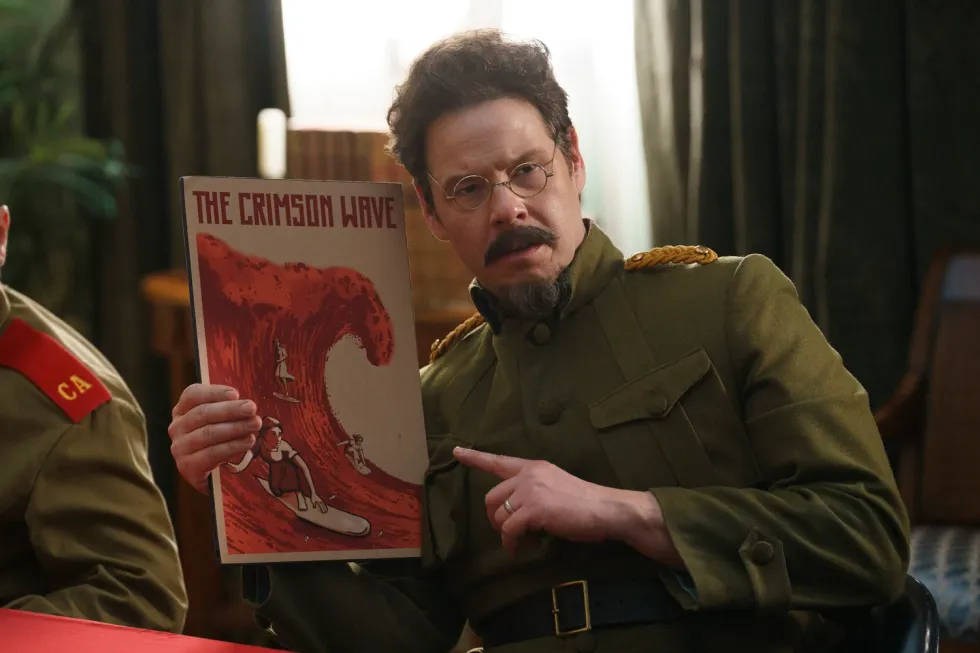How This Editor's Experience On Comedy Shows Landed Her Three Emmy Nominations
From comedy shows to three Emmy nominations for The Upshaws and History of the World, Part II, Editor Angel Gamboa Bryant breaks down how she edits comedy on the spot.

'The Upshaws'
This post was written by Angel Gamboa Bryant.
I started working with Wanda Sykes and Page Hurwitz at Push-it Productions in 2014 editing comedy-based game shows and stand-up comedy. My passion has always been to work in narrative and a few years later, they offered me the opportunity to edit a Netflix multi-camera comedy they were producing along with Savannah Sweet and Naptown Productions starring Wanda, Kim Fields, and Mike Epps, called The Upshaws.
This was a pivotal moment in my career for multiple reasons. It was my first multi-camera sitcom and I was the only editor on the second season of a hit show (except Episode 5, where I share a credit with the talented Russell Griffin). This came with a lot of pressure and growth but also led to my first three Primetime Emmy nominations in 2023: two for The Upshaws and one for History of the World Part II.
The Upshaws: Part 3 | Official Trailer | Netflixyoutu.be
Coming from a background of editing stand-up comedy made my transition to cutting The Upshaws a fluid one. Multi-camera sitcoms are shot on a soundstage with a studio audience and because they have a laugh track, the editorial style is much like stand-up comedy in the sense that the show is cut fat with room for the laughter to play out and time for the characters to take the laughter in. Single Camera comedy, however, is usually edited in a much tighter manner, with jokes layered on top of each other. The editorial style of The Upshaws is a hybrid of the two: we have the element of the studio audience, however, our showrunners prefer that the edits are on the tighter side, which is a different take on this format. I enjoyed the challenge of landing the jokes with the proper takes and reactions while artfully weaving in the laughter.
The other thing that sets the unique format of The Upshaws apart is that the editor is involved in production as well as post. On the pre-shoot day, I will either watch a live feed from my edit bay or go to set and sit with the showrunners, writers, and the director in video village to ensure we get the proper coverage. Then, I have to rush back to edit 7-9 scenes by the next afternoon for playback for the live studio audience, so we can record laughs. This tight turnaround and making sure I’m getting the best content into the cut while landing the jokes are two challenges of editing this show. Just because I have to work fast doesn’t mean I can let the story suffer, as it will be played in front of a live audience which truly tests the effectiveness of the comedy.
History of the World Part 2 | Trailer | Huluyoutu.be
My experience editing The Upshaws led me to my next show, History of the World, Part II. Just as we were wrapping up our season, Wanda asked if I’d be interested in cutting the Mel Brooks sketch comedy series. Of course, I jumped at the chance!
Coming from The Upshaws, where it was generally just me in the edit bay combined with the multi-camera editorial style, was an adjustment as History was quite the opposite. The culture of History of the World was extremely collaborative. We would screen cuts together as an editorial team and debate how to land a joke better, or which scenes would play best in an episode together. Additionally, I had to recalibrate my thinking to the editorial style of single-camera sketch comedy.
On The Upshaws, we almost always stuck to the script and the pace was much slower. However, on History of the World, the actors in the sketches often would deliver a plethora of improv gold, and finding ways to work these moments into the sketches to layer jokes, was not only valued but encouraged.

This mindset also really paved the way for a lot of creative freedom. Oftentimes, we were re-writing jokes in the edit bay which did a lot to elevate the comedy. Also, being that History of the World is sketch comedy, there is a large variety of sketches in each episode about moments in history ranging from The Russian Revolution to Jesus, Sigmund Freud, and Kublai Khan. This created a unique challenge to build episodes that felt well-balanced. We spent many months as a team carefully structuring episodes, trying to position historical subjects, diversity, and types of sketches with longer or shorter sketches.
The most exciting thing for me about working on The Upshaws was that I grew up watching multi-camera sitcoms. They were a household staple for us, and since my family was first-generation Mexican-American on my dad’s side, it was very relatable to see other minority blue-collar families and their struggles told through comedy. Comedy is subjective, so having that relatability really helps me craft the story and punctuate the comedy in the edit bay.
Similarly, I grew up watching everything Mel Brooks and his comedic style has definitely informed my career in the genre. So when Wanda asked me if I was interested in working on History of the World, Part II, it was an extremely humbling moment that I knew would be both incredibly rewarding and challenging. Working on these two projects obviously paid off, as they earned me my first three Primetime Emmy nominations.
My advice to young aspiring filmmakers would be to start creating anything and everything. With the advances in technology, it’s so easy to take your phone or another device and record/edit a story. Once you learn the craft well, enter your work into as many film festivals as possible and network with like-minded individuals.
Get to know others with the same goals and aspirations. Create together and get noticed. Work hard for low pay at first. If you are truly passionate and put the work in, the jobs and money will follow. Most importantly, don’t have an ego! If your supervisor asks you to bring her coffee, ask her how she likes it. She may well bring you on to the next Star Wars movie.
This post was written by Angel Gamboa Bryant.
Angel Gamboa Bryant is a three-time Emmy-nominated television & feature editor with two decades of industry experience. Most recently, she edited the Hulu sketch series History of the World, Part II, starring Mel Brooks, Ike Barinholtz, Wanda Sykes, and Nick Kroll; as well as the Netflix sitcom The Upshaws. In 2023, she was Emmy-nominated for the first time, scoring three Primetime Emmy nominations, including one Emmy nomination for History of the World Part II for Outstanding Picture Editing for Variety Programming, and two Emmy nominations for The Upshaws for Outstanding Picture Editing for Multi-Camera Comedy Series. Angel also has an impressive resume editing stand-up comedy specials for some of today’s most acclaimed comedians, including the Netflix specials: Wanda Sykes: Not Normal; Tiffany Haddish: Black Mitzvah; Ms. Pat: Y’all Wanna Hear Something Crazy, and Stand Out: An LGBTQ+ Celebration, to name just a few.
As a first-generation American, Angel’s multicultural background allows her to bring a unique perspective and skillset to the editing room. Throughout her childhood, Angel spent her summers in Mexico, where she saw people living without the luxuries commonplace throughout America. This experience gave Angel a global mindset and understanding of different cultures and languages. As an expert in editing a subjective genre like comedy, having a diverse perspective has been extremely beneficial to Angel’s work in telling the best story and landing all of the jokes while being culturally mindful.
Angel’s diverse editorial background has shaped her into a uniquely skilled editor who can inject a distinct perspective into the films and TV shows that she works on. Her aspirations for the future are to further establish herself as a trusted editor of scripted TV and feature films and expand into editing different genres such as dark comedy, comedic horror, suspense, and drama.
- Watch: How Does Horror Comedy Work? ›
- 'Curb Your Enthusiasm': How the Editors Find the Comedy in the Show's Unique Shooting Style ›
- Kelly Lyon, ACE, on Editing With Adobe Premiere Pro To Make Humor Hit Home in Netflix’s ‘John Mulaney: Baby J' ›
- Cut for the Laugh With Double Emmy-Nominated Editor Kelly Lyon | No Film School ›
- Let's Dissect the Laugh Track on TV | No Film School ›
- 'Nobody Wants This' Editor Maura Corey Explains Cutting For Comedic Timing | No Film School ›
- How You Edit Comedy and Trans Visibility in 'Will & Harper' | No Film School ›

 'Anora'Neon
'Anora'Neon Annie Johnson Kevin Scanlon
Annie Johnson Kevin Scanlon









